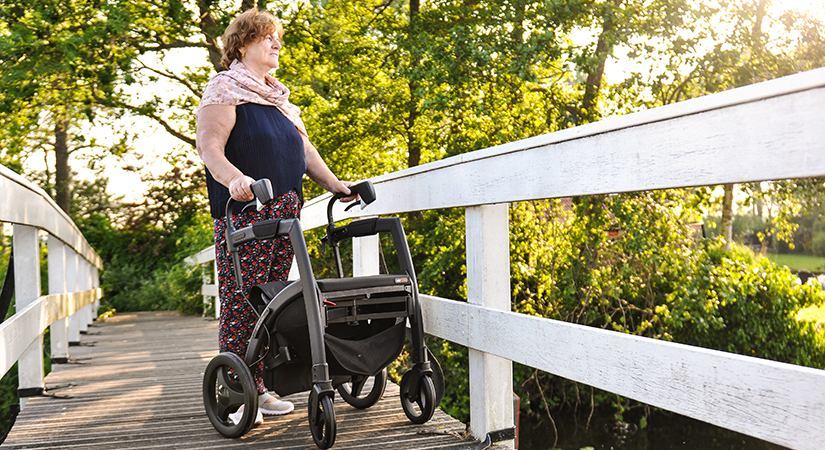Going out for a walk when you have Parkinson’s Disease, and indeed without, is an activity with many health benefits and is an excellent, free exercise which helps to remain living active and fulfilling lives. More specific to Parkinson’s Disease and other neurological conditions, is the importance of the preparation – deciding the tools to take along. Whether getting ready for an amble or a wander, with pace or to potter, what we take with us is key in ensuring we reap those benefits to our health… But why?
It is common practice to make sure we are equipped with the items needed for personal safety, such as a phone and any equipment used. We should also add any items needed for our comfort, such as well-fitting footwear with supportive soles and clothing which is appropriate for the often-changeable weather. But what about other important tools to take such as knowledge, experience, confidence, or workarounds?
You will of course note that nothing within this is specific to Parkinson’s Disease and is indeed just good general practice. However, for people living with Parkinson’s disease, walking outdoors can be more difficult due to altered gait patterns, issues with balance and fatigue. These walking changes can be frustrating and may discourage engagement with the outdoors. This could be seen as counterproductive, because in order to gain the health benefits from being active, a person has to be able to be active. With considered preparation, helping a person become more active can be achieved by using a metaphorical ‘kit bag’ of tools.
We will explore what tools this ‘kit bag’ might include, but first let us consider the intention of each walking activity. Walking is often done at a person’s own pace and timing and can be purposeful or mindful. Essentially the reason for walking outdoors will be specific to each person and will carry different meaning and significance.
For example, the walk could be for relaxation, or part of a therapeutic exercise programme; the destination could be a shop, school, for exploration, social or leisure activity. It is vital to consider the context of the activity being completed, as this can influence which tools for support are needed.
An occupational therapist can recommend and help practice the best equipment and strategies to use when walking outdoors. A stable rollator, and one that is equipped with different triggers or cues, will help a person with Parkinson’s disease cope better with freezing episodes, turning, or navigating obstacles, improving balance, anxiety, and confidence with walking. When preparing for any walking activity, it is important to remember the various techniques and personalised mobility equipment. Applying these strategies to different situations will be individual to each person and will help the person living with Parkinson’s Disease and other neurological conditions to safely engage with outdoor mobility.
If using compensation strategies such as adapting a walking pattern, changing balance requirements, or using cueing, through a combination of laser line, audible tone or vibration, to help overcome walking changes, consider what sort of environment the walk will take place in and through.
There is a famous quote written about how preparation is the key to success. It’s important to remember however, that even though levels of success are measured differently by everyone, preparation remains a vital tool for the journey… so keep that metaphorical kit bag handy.
